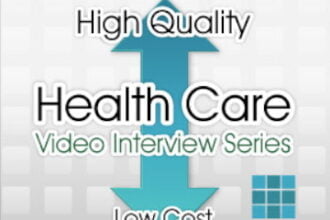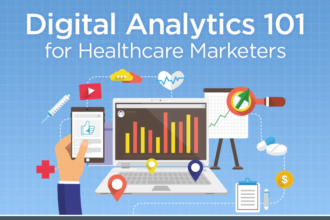 Malcolm Gladwell, author of The Tipping Point: How Little Things Can Make a Big Difference, states that; “ideas and products and messages and behaviors spread like viruses do” moving through the population with alarming rapidity.
Malcolm Gladwell, author of The Tipping Point: How Little Things Can Make a Big Difference, states that; “ideas and products and messages and behaviors spread like viruses do” moving through the population with alarming rapidity.
Like an epidemic, the adoption of EHR – Electronic health records has reached a tipping point despite strong resistance, and a recent national survey now indicates that a majority of US healthcare providers are now in some stage of adopting EHR.
Are you reluctant to pull the trigger?
Perhaps because “epidemics are sensitive to the conditions and circumstances of the times and places in which they occur” (per Gladwell) today’s market has worked to push both eager and reluctant healthcare providers to adopt EHR. Some circumstances are political, like the Health Information Technology for Economic and Clinical Health Act, which was designed to promote the use of electronic health records, and some are economic like the federal incentive for adopting electronic health record technology. The most compelling circumstance, however, is simply that the technology is now available.
Are you to old to implement an EHR?
Barriers to this epidemic are physician age, office size, and whether or not the physician specializes. 49 percent of healthcare providers aged 50 or older have not adopted an EHR while 64 percent of those under 50 have adopted it. Larger physician practices have been more likely to adopt EHR than smaller offices or specialists, such as surgeons, usually because of the cost involved. But like most epidemics, the outbreak is growing as awareness of the benefits/shortfalls spread.
Electronic health records make sense, but only if chosen correctly. EHR’s offer benefits such as improved productivity, faster and more accurate collections and billing, the option of using mobile devices to help improve efficiency and coordinate care, and improved efficiency and patient safety gained through e-prescribing. However these promised benefits don’t mean much unless they actually occur. Which in the case of most EHR’s they do not.
How do you reap the benefits of succumbing to this epidemic?
- Receiving a check for the federal incentive means meeting the government’s requirements for “meaningful use”. To do this you need to understand the menu set requirements, the reporting requirements, and the quality metrics at the start. It is important to take the lead (especially for practice-specific decisions like which quality metrics you will attest for). Be sure to leverage the assistance of your state’s Regional Extension Center (REC) too. They are available at no or low cost in every state to physicians in small or rural practices, and will assist with registering and attesting, pulling reports, explaining processes, and identifying documentation problems. Do not let free money change how you do your due diligence, you will have to live with your decision for many years after the installation.
- Gaining the promised improved productivity first requires looking at the overall productivity of the group; determining where everyone spends their time. More time documenting after implementing EHR could also mean less time on prescription renewals. Target the documentation problem areas and consider altering workflows, templates, or even adding voice recognition to streamline work.
- Faster and more accurate collections and billing occurs when you integrate your EHR with your clearing house system, allowing you to capture patient insurance, co-pays, and deductibles at the front end so the patient immediately knows what they owe. Look at the whole EHR picture; integration with billing is crucial. Consider whether you need your EHR to contain billing, show claims in real time (allowing for immediate correcting), and whether the company providing your EHR will be partners as you learn and use the system.
- Using mobile devices to improve efficiency and coordinate care is ideal for healthcare providers who are mobile themselves. Looking at patient lists, reviewing images and lab results, entering notes, and having the ability to immediately present images to patients are all benefits to be gained. However unless the EHR is specifically built with a mobile system in mind, you may run into limitations in the work you can do on a mobile device, so consider your needs and goals in advance. Keep security in mind too, by employing appropriate technical safeguards and appropriate behaviors; remain mindful of where you use your mobile device.
- E-prescribing improves patient safety, allowing for computerized drug/drug and drug/allergy alerts, and reducing transcription errors and pharmacy calls, but will the program stand alone or interface with your EHR? Standalone programs are cheaper, running around $600-$800, while e-prescribing systems that interface with an EHR are around $2,000. However an interface may be more cost effective in the long run, eliminating dual entry of patient demographic and insurance information, and eliminating the need to update patient records.
Now in a perfect world, the above benefits would be great, but the reality is that their are over 1400 EHR’s in the United States and most are servery underfunded and are likely to fail in the next 5 years, will your investment of time, money, and your reputation be affected? Unfortunately many doctors and hospitals have made the wrong choice. Check out our latest article, ” Why Most EHR’s Will Fail, is Yours Next?” for more details about what to avoid
The epidemic is here. Electronic health records are becoming more common, appearing in multiple locations not unlike a rash. But unlike a rash, the EHR has the potential to smooth the way for healthcare providers who know how to leverage the technology and gain the benefits. In this country, and at this time, most healthcare providers are susceptible or have already succumbed.
What about you; are you at risk?
Please tell us your success or horror story below, our readers would like to hear more about it.








